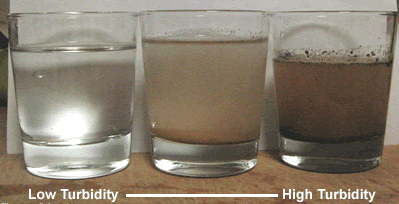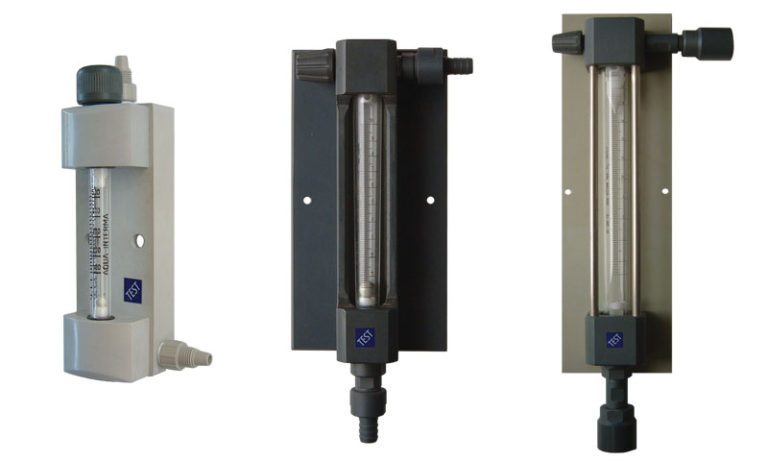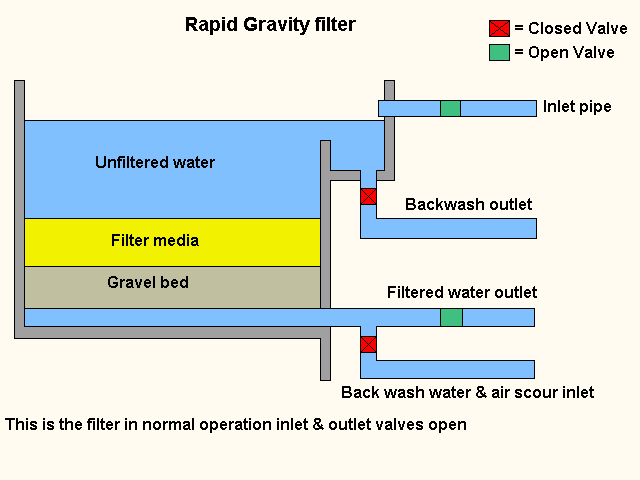Here are 4 practice questions for the Water Treatment Operator Certification Exam. I included the answers to these questions at the bottom of this page.
Water Treatment Operator Certification Exam
- Which statement is true regarding the Interim Enhanced Surface Water Treatment Rule for conventional or direct filtration?
- Turbidity of the combined filter effluent must be less than 0.5 NTU in at least 90% of samples collected every month
- The turbidity of the combined filter effluent must be less than or equal to 0.4 NTU in 90% of samples collected every month
- Turbidity of the combined filter effluent must be less than or equal to 0.3 NTU in at least 95% of samples collected every month
- The turbidity of the combined filter effluent must be less than 0.2 NTU in 95% of samples collected every month
2. What is used to measure the flow rate of chlorine gas?
- Proportional meter
- Nutating-disc meter
- Compound meter
- Rotameter
3. What could happen if the backwash rate is too high?
- Cavitation
- Mudball formation
- Excessive loss of filter media
- Increase in head loss in the filter after backwashing has finished
4. Which of the following is a reciprocating pump?
- Vertical turbine pump
- Piston or plunger pump
- Centrifugal pump
- Horizontal split-case pump
Water Treatment Operator Certification Exam
ANSWERS
1. C
First of all, the Interim Enhanced Surface Water Treatment Rule is a drinking water regulation. It’s intended to reduce illnesses caused by harmful microorganisms in drinking water. Moreover, it applies to all water systems serving at least 10,000 people, and using surface water or groundwater under the direct influence of surface water.
This regulation has various requirements. One of the requirements is that the turbidity of the combined filter effluent must be less than or equal to 0.3 NTU in at least 95% of samples collected every month.
Filter effluent is the treated water, flowing out of a filter.
Turbidity is the cloudiness of the water. It’s caused by suspended solids that make the water appear dirty. Turbidity is measured in NTU, which stands for nephelometric turbidity units.
Again, you’re not allowed to have more than 0.3 NTU in at least 95% of the combined filter effluent samples collected each month. This keeps the water safe to drink.

2.D
A rotameter is a device that measures the flow rate of chlorine gas. Moreover, it’s part of a chlorinator, which is an equipment that injects chlorine gas into drinking water to disinfect it.
The other meters mentioned in the answer choices are various water meters in the distribution system.
Here’s what a rotameter looks like:
Furthermore, here’s what a chlorinator looks like. The rotameter is located on the right side of the chlorine gas cylinder.
3. C
First of all, “backwashing” means to clean a filter at a water treatment plant. Over time, the filter will get clogged with solids as water flows through it. Therefore, it’s important to clean it periodically by reversing the flow of water to unclog the solids build-up.
Whenever you see this word on the operator certification exam, you should immediately recognize that the question is on filters.
As an operator, you must understand the importance of backwash rate, which is how quickly water moves in the reverse direction during the cleaning process.
You don’t want the backwash rate to be too high. Otherwise, the materials in the filter, called filter media, will wash away excessively.
Therefore, you want to control the backwash rate to an acceptable level.
To better understand how a filter is backwashed, carefully review the following drawing. When water is being treated, it flows downwards through the filter. However, when the filter is being backwashed, the flow is reversed, and moves upwards.
4. B
A reciprocating pump is a positive displacement pump. The easiest way to understand how it works is to look at the following image. In short, it pumps liquid by pulling the liquid into a chamber, and then pushing it out.
Both piston and plunger pumps are types of reciprocating pumps. As you can see above, it acts like a plunger and piston.
Helpful Resources:
Practice Exams for Water Treatment Operator Certification Exam
Online Course for Water Treatment Operator Certification Exam
Lastly, if you’re looking for more practice questions to study for the Water Treatment Operator Certification Exam, go to the following link: Practice Problems .






Pingback: 5 Common Questions on Water Treatment Operator Certification Exam – PennsylvaniaDigitalNews.com
Pingback: 5 Common Questions on Water Treatment Operator Certification Exam | Driving Tips